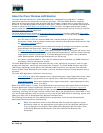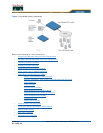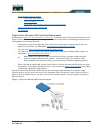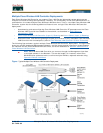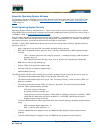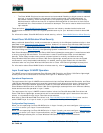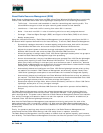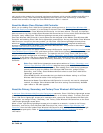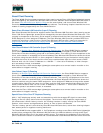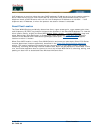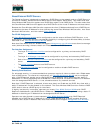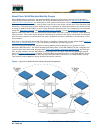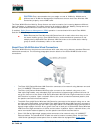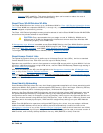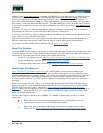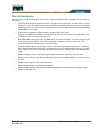
5/26/05 Client Roaming
OL-7426-03
About Client RoamingClient Roaming
The Cisco WLAN Solution supports seamless client roaming across Cisco 1000 Series lightweight access
points managed by the same Cisco Wireless LAN Controller, between Cisco Wireless LAN Controllers in
the same Cisco WLAN Solution Mobility Group
on the same subnet, and across Cisco Wireless LAN
Controllers in the same Mobility Group on different subnets. The following chapters describe the three
modes of roaming supported by the Cisco WLAN Solution.
Same-Cisco Wireless LAN Controller (Layer 2) RoamingSame-Cisco Wireless LAN Controller (Layer 2) Roaming
Each Cisco Wireless LAN Controller supports same-Cisco Wireless LAN Controller client roaming across
Cisco 1000 Series lightweight access points managed by the same Cisco Wireless LAN Controller. This
roaming is transparent to the client, as the session is sustained and the client continues using the same
DHCP-assigned or client-assigned IP Address. The Cisco Wireless LAN Controller provides DHCP func-
tionality be providing a relay function. Same-Cisco Wireless LAN Controller roaming is supported in
Single-Cisco Wireless LAN Controller Deployments
and Multiple-Cisco Wireless LAN Controller
Deployments.
Inter-Cisco Wireless LAN Controller (Layer 2) RoamingInter-Cisco Wireless LAN Controller (Layer 2) Roaming
Similarly, in Multiple-Cisco Wireless LAN Controller Deployments, the Cisco WLAN Solution supports
client roaming across Cisco 1000 Series lightweight access points managed by Cisco Wireless LAN
Controllers in the same mobility group and on the same subnet. This roaming is also transparent to the
client, as the session is sustained and a tunnel between Cisco Wireless LAN Controllers allows the client
to continue using the same DHCP- or client-assigned IP Address as long as the session remains active.
Note that the tunnel is torn down and the client must reauthenticate when the client sends a DHCP
Discover with a 0.0.0.0 client IP Address or a 169.254.*.* client auto-IP Address, or when the oper-
ator-set session timeout is exceeded.
Note that the Cisco 1030 remote edge lightweight access points at a remote location must be on the
same subnet to support roaming.
Inter-Subnet (Layer 3) RoamingInter-Subnet (Layer 3) Roaming
Similarly, in Multiple-Cisco Wireless LAN Controller Deployments, the Cisco WLAN Solution supports
client roaming across Cisco 1000 Series lightweight access points managed by Cisco Wireless LAN
Controllers in the same mobility group on different subnets. This roaming is transparent to the client,
because the session is sustained and a tunnel between the Cisco Wireless LAN Controllers allows the
client to continue using the same DHCP-assigned or client-assigned IP Address as long as the session
remains active. Note that the tunnel is torn down and the client must reauthenticate when the client
sends a DHCP Discover with a 0.0.0.0 client IP Address or a 169.254.*.* client auto-IP Address, or
when the operator-set session timeout is exceeded.
Note that the Cisco 1030 remote edge lightweight access points at a remote location must be on the
same subnet to support roaming.
Special Case: Voice Over IP Telephone RoamingSpecial Case: Voice Over IP Telephone Roaming
802.11 VoIP telephones actively seek out associations with the strongest RF signal to ensure best
Quality of Service (QoS) and maximum throughput. The minimum VoIP telephone requirement of
20 millisecond or shorter latency time for the roaming handover is easily met by the Cisco WLAN
Solution, which has an average handover latency of nine or fewer milliseconds.
This short latency period is controlled by Cisco Wireless LAN Controllers, rather than allowing indepen-
dent access points to negotiate roaming handovers.
The Cisco WLAN Solution supports 802.11 VoIP telephone roaming across Cisco 1000 Series lightweight
access points managed by Cisco Wireless LAN Controllers on different subnets, as long as the Cisco
Wireless LAN Controllers are in the same mobility group. This roaming is transparent to the VoIP tele-
phone, because the session is sustained and a tunnel between Cisco Wireless LAN Controllers allows the



